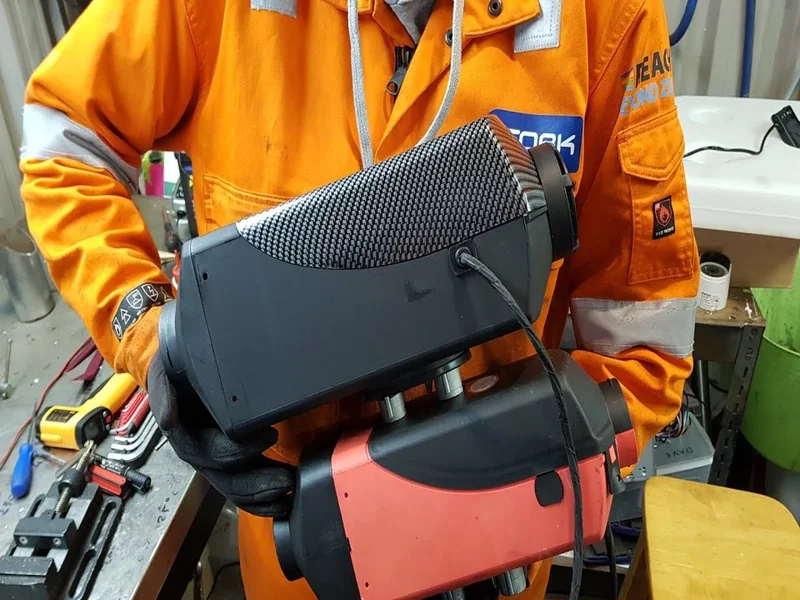One of the big benefits of driving an RV around is always having your living room and home theater setup with you no matter where you are!
Obviously, RV drivers aren’t – and shouldn’t – be spending a lot of time watching television while behind the wheel of these big rigs. But that doesn’t mean that the rest of the family or your friends can’t put on TV, movies, or play video games while you are driving the RV from one location to the next.
Yes, you are reading that right.
It’s not just possible to watch TV while an RV is moving, it’s a lot easier than most people realize.
Let’s dig a little deeper right now, shall we?
Can You Watch TV in an RV While Driving?
As we highlighted a moment ago, it’s definitely possible to have your TV on while you are driving your RV down the road – though drivers should always keep their full focus and attention on the road in front of them.
Not only is watching television while driving and RV unsafe (obviously), but a lot of states and municipalities across the country actually make it against the law, too.
The last thing you want to do is get pullover in your RV for having an active television on within view of the driver. That’s often enough to get you cited and ticketed, even if you actually weren’t watching TV at all!
The bottom line, though, is this – you can have your TV going while you drive. It’s not quite as easy as hitting the power button on your remote and tuning to a channel, though.
But we get deeper into that in just a second.
TV Power Supply Needs May Be Impacted
Right out of the gate you should know that the overwhelming majority of televisions (especially those designed for home use) are pretty power-hungry.
Most of these TVs are designed specifically to take the voltage of 110 V/120 VAC power systems that are responsible for supplying “juice” to all the outlets in our home.
You might when you’re RV is parked and hooked up to the utilities at an RV destination (or even running off of your charged-up batteries). But while you’re cruising down the road your electrical system is going to be recharging and handling the electrical needs of the vehicle part of your RV!
You’re probably not going to have access to that kind of power when your RV is rolling down the road, however, we found at least 3 solutions to how to watch TV in an RV without a generator.
RV Specific TVs Do an End Around This Problem
Of course, a quick “cheat code” for this power problem is to simply plug RV-specific TVs into your electrical outlets when you are underway and avoid these electrical bottlenecks altogether.
Televisions designed to run off of the 12 V outlets in your RV are going to work (almost) as well as high-end residential TVs. RV television technology has come a long way in just the last 20 years or so, and some of these 12 V sets are downright gorgeous.
Sure, you almost always give up a lot of screen size when you use these televisions. But if they are dedicated to only being used while the RV is in motion that shouldn’t be much of a problem.
The big advantage here, though, is that you don’t have to do anything crazy to supply your “normal” televisions with extra electricity the way you would have otherwise. Your batteries (and your RV electrical system) will never get overtaxed with this approach.
Inverter Tech Works, Too
If you really want to use your big-screen TV while barreling down the road, though, you can always get your hands on a quality inverter and let it handle the heavy lifting of powering your television.
It’s important that you find an inverter specifically designed to match the wattage of your television. You need the TV wattage to match up to the capacity of the inverter that you are implementing or everything is going to go haywire.
You’ll also have to do a little bit of custom wiring to tackle this kind of project.
Most RV owners with just a little bit of technical skill and handedness with tools should be able to knock this project out without much trouble. Still, when you’re talking about tinkering with the electrical system of your RV it might not be a bad idea to call in the professionals.
Will I Be Able to Get a TV Signal While Driving?
The other challenge you’ll have when trying to watch TV while the RV is driving is getting a signal for your television programs.
Sure, antennas and satellite dishes might work when your RV is stationary. Those can deliver crystal clear, HD channels – often more than you would have thought possible to get in your RV.
But what about on the move when you are flying down the highway at 60, 70, or 80 miles an hour?
Traditional TV setups aren’t going to work.
That doesn’t mean you’re going to be stuck going without TV while your vehicle is moving, though.
If you have a mobile internet signal (either through using your smartphone as a hotspot or investing in a hotspot from your wireless carrier) you should be good to go. You can “stream” live TV services like YouTube TV, Hulu, and Sling (as well as a bunch of others) while on the go as long as that wireless signal stay strong.
Of course, if you have your own mobile Wi-Fi set up you can also watch Netflix, Hulu, HBO Max, and other streaming services as well.
When you don’t have mobile internet (or when your mobile internet is unreliable) you’ll still be able to watch TVs and movies if you have the content stored locally.
That might mean sticking Blu-rays in a gaming console, plugging in an old DVD player and lugging some favorite movies and TV series around, or setting up a streaming stick with an external hard drive that you can fill with all your favorite content.
At the end of the day there are plenty of options if you really want to watch TV while your RV is on the move.








